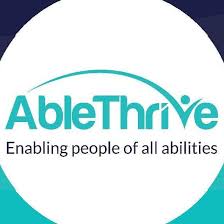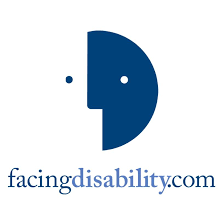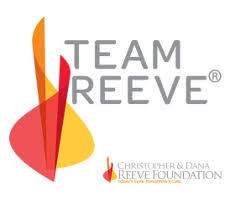|
John and I traveled for a day trip to Newport, Rhode Island for the first time. The landscape from the cliff walk brought the fjords of Norway to mind, a fusion of rippling water and majestic rock, oblivious to the passage of time.
Ben applied to several graduate schools across the country for a master’s program in literature. He decided to attend wherever he received the most financial aid. With acceptances in hand, Brandeis University won in Waltham, Massachusetts—the same city where John and I lived. All three of my kids would live close to us for the next school year. My doctor referred me to a specialist when the headache spiked, and my left arm prickled and hurt. I made an appointment with a physiatrist, a specialist in muscles and rehabilitation. Dr. Ariana Vora at Wellesley’s Spaulding office diagnosed my headache as cervicogenic: pain referred to the head from the cervical spine or soft tissues (or both) within the neck. Complicated by displaced jaw joints, fibromyalgia, and advanced arthritis. A body scan revealed an my unusually high level of arthritis literally everywhere. My neck, left elbow, right knee, and hands bothered me most. I was forty-nine years old, going on ninety. Dr. Vora ordered physical and occupational therapy to focus on my neck muscles in constant spasm. At one session, a patient complained loudly about over-the-counter medicine that completely eliminated her wrist pain because she hated taking pills. Whining about the absence of pain? I’d be happy if mine dropped from constant to sporadic. My physical therapist with daily headaches rolled her eyes at me in solidarity. I tried acupuncture, facet joint injections, and later, botox shots. I also drove to a shop in Brookline where an elderly Chinese man listened to the heartbeat in my wrist and sold me bitter, exotic herbs. Once. Daily exercise, meditating, and holistic approaches tamped down the headache to a lower base level. I appreciated my evolution of sorts: to be able to make time for me and not feel guilty about it. I valued myself more. I no longer thought of myself as weak and flawed for not getting all my ducks in a row. We all lived in the same messy pond, without perfection. I tried not to anticipate or worry about the next headache flare. I finally absorbed the idea of taking care of myself first which allowed me to give to others in a better way. I made extra efforts to connect with friends and family and started a gratitude journal. I had so much to be thankful for. Next: Beth's mosaic of squares! (Would you like to know about my brand-new Struggling with Serendipity book? Please click the links at the top of this webpage. Thanks!)
4 Comments
(This blog tells my family's story. To see more, click "blog" at the top of this webpage.)
With growing confidence, Beth filled her time with the school newspaper, homework, volunteering, clubs, Raptors, and another high school musical. She also decided to get back in the pool as soon as the doctor’s ban ended. Towards the end of Beth’s sophomore year of high school, she was free to go to Green Springs for physical therapy once instead of twice after school. “Laraine said that when therapy gets in the way of life, then it is time to move on,” Beth explained. The last physical therapy session, almost two years post-injury, ended with the anticipated rite of passage. The final test: while Beth dramatically finished her last pushup, she pushed off her favorite therapist who was leaning on her back. Laraine dramatically stepped away. Everyone clapped. A sad and happy moment, the end of an era, though we would continue to meet Laraine and her students in Toledo every few months. “I continued physical therapy as an outpatient for two years,” Beth said. “Three times a week at first then going to twice and then once a week, we drove to St. Francis after school to workout for about two hours. Recently I ‘graduated’ from physical therapy since I get plenty of exercise on my own now and since I always am extremely busy.” At another seminar for physical therapy students, Beth enthusiastically shared a milestone. Leaning back in her wheelchair, she took an elastic band off her wrist and held it in her teeth. She used both hands and arms to scoot forward in the chair and then lean back. From that position, she reclaimed the elastic with the one finger she could move. Her smile wavered a moment as she concentrated on intricate degrees of progress. When the second loop secured a messy ponytail, she took a bow with a flourish and a ta-dah! Sweet 16 on her April birthday, Beth returned to the water. A physical therapy student, Colleen, offered to help at the University of Toledo pool on a Saturday. After observing the usual floating with arms waving underwater, Colleen, a college swimmer, provided advice and a hand of support under her back while Beth rotated her arms, one at a time. Next, they tried circling both arms together, causing her head to dip under water. None of it came naturally. Beth had water safety lessons as a toddler, but had never been a swimmer before the accident. With the first wheelchair games a week away, we met Colleen a second time. They focused on the traditional, alternating backstroke, taxing muscles and stamina. For the first time, she could swim the backstroke—awkward and faltering. Beth slept through the hour ride home, dreaming. Here’s Beth's video on how she puts her hair up: www.ablethrive.com/basics/putting-hair-up-in-a-ponytail  (This blog tells my family's story. To see more, click "blog" at the top of this webpage.) Beth had another sleepover on New Year’s Eve with her best friends and a fondue feast at our house. Soon after, Dr. Miller asked Beth if she would exchange emails with a new quad, and I talked to an overwhelmed mom on the phone. I listened but shared little, only how everything had changed in comparison to the initial month and how I hoped for more progress. I was sure that I wasn't a good role model for other parents. The New Year and the time beyond seemed impossibly uncertain. My concerns encompassed the global and the trivial. I was an equal opportunity worrier. Since 9/11, terrorism and nuclear weapons found their way into my nightmares. Any number of potential health problems threatened Beth—and everyone I loved. When she ventured out into the world as an adult, what kind of welcome would she find as a quad? As a toddler, she was Cinderella to Maria's Snow White. Would they find their happily ever afters? At a meeting in Toledo, Beth registered for the wheelchair games in May with the Raptors. She thought that she wasn’t good enough to sign up for the pool events, but others convinced her to try. Some of her friends also shared their earlier trips to another sports event, the National Junior Disability Championships, held every summer for kids from across the country. In February, Beth elected to have an eight-hour bladder surgery, paving the way for independence. As a result, I would no longer need to be with her every few hours. A week after she left the hospital, against my advice, she agreed to help Laraine with a new class of physical therapy students. Beth wore loose clothes to cover the temporary tubes from the surgery that protruded from her abdomen along with a small rubber bulb. Laraine teased about going easy on her during the mat exercises. When Beth sat with her hands in her lap, she wobbled less than she had at the last demonstration. Careful with the tubes, Laraine refrained from pushing hard to test her balance. Beth also shared her ponytail progress with the students, but she still couldn't complete an additional loop of the elastic to keep it in place. Not yet. At the followup appointment with the urologist, he removed all the tubes and the bulb for good, leaving bare skin and a long surgery scar below her belly button. We celebrated with a shopping trip. She had fun picking out cute underwear and a bikini swimsuit. Beth was disappointed with the doctor’s ban on swimming for six more weeks as she healed from the major surgery, not negotiable. And her first swim meet ever was just ahead. 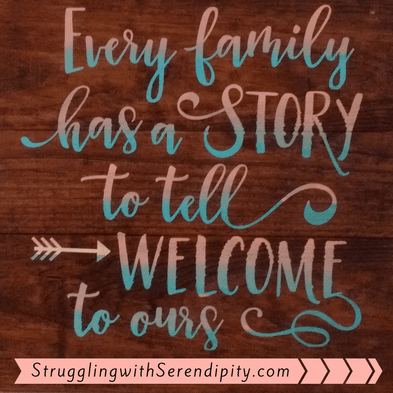 (This blog tells my family's story. To see more, click "blog" at the top of this webpage.) When snow started to fall in Ohio, I pulled my sewing bag out of the closet. I made my favorite peace doves out of felt with embroidered accents and lacy wings for Laraine, Jill, and the other therapists at Green Springs, part of our extended family. I loved how they loved Beth. I mailed Christmas cards decorated with doves, wishing for peace. For the world, for our country, and for me. John drove with Beth, Maria, and me to Toledo for the holiday party of the spinal cord injury group. Talking to other parents, I could answer the sad question of who was to blame for the car accident that injured Beth, and without crying. Progress of sorts after a year and a half. Though my guilt was still alive and well, and I quickly steered conversations away from the accident. I talked to other quads, some with serious health issues that increased my sense of foreboding. I wanted to be positive and optimistic, but I couldn’t find the way. John was in his element. He started conversations and listened to the journeys that others had traveled—and shared our family’s story. We teased him that everyone in Ohio knew about Beth’s injury. John often said that everyone has a story. Maria and Beth sat at the cool kids table with the teenagers while the younger children watched them. I heard part of a conversation about the first Harry Potter movie, The Philosopher’s Stone, in theaters since before Thanksgiving. Most of the teenagers had seen it more than once, including my girls. After our goodbyes at the party, I was relieved when Beth dosed off in the car, avoiding her anxiety about driving in the dark. Her worries were specific and situational, such as tornado warnings and the low gas indicator in the car. Maria already had a driver’s license, so one clear Saturday afternoon, my girls went shopping at the Findlay mall. On the way home, Beth noticed the low gas indicator turn on as they entered a fifteen-minute stretch with no gas stations. She wanted to turn around and go back to the closest station. Maria tried to reason with her, unsuccessfully, and they both arrived home frustrated. Thankfully, the conflict was soon forgotten. It was beginning to look a lot like Christmas—as it had been before the accident. It was easier to hold brief conversations with other parents after the holiday choir concert, always a lovely highlight of the season for me. When my kids were little, we read about Christmas traditions and their origins. Favorite songs, decorating the house and tree, making special food and cookies, playing card games, watching movies with popcorn, wrapping gifts, and making new memories to add to many lovely ones at my family's farmhouse. Sitting around the big dining room table at the farmhouse, I missed my grandma and grandpa, reminded how life can change in a moment. All the more reason to hug loved ones close. Merry Christmas and Happy Holidays to you and yours!  (This blog tells my family's story. To see more, click "blog" at the top of this webpage.) Beth’s second year of high school would hold different challenges than the first. When she started her sophomore year, sixteen months after her injury, I could get through the days without crying in front of anyone, a victory of sorts. “My small group of really close friends in high school helped me in many ways,” Beth said, “including breaking my leg spasms and carrying my book bag. By the second year I had those things under control, but a friend continued to sit by me in class only because it was more fun that way.” I took a short cut through the school cafeteria on September 11th at lunchtime and paused by a strange crowd of silent students in front of the television screen. It took only a moment to get my first glimpse of unthinkable tragedy. I rushed to the locker room, relieved to find Beth and Maria waiting for me. Hugged close and safe, for the moment. I grieved with the nation, overwhelmed by the scale of the losses and the faces of children who would never grow up. My worst-case scenarios amplified after 9/11. Terrorism took on a life of its own in my mind, growing and mutating into an on-going and imminent threat. I tried to tap down the fear by storing bottled water in the basement and packing an emergency duffle bag. I wrote phone numbers and a meeting place on a small rectangle of paper, copied and laminated for each member of my immediate family to carry in their wallet. An article that I read caused me more worry, about the terrible knowledge that nuclear weapons had already been used in the past, and might be used again. My heightened fears grouped nuclear weapons with terrorism and a deadly virus. Toxic chemical spills were a high risk in Ohio with the heavy truck traffic. And a personal, selfish anxiety about any number of alarming events that could restrict prescription drugs; I was acutely aware of my addictions with antidepressants and pain medicine (not opiods, thankfully). Who would I be without the prescriptions? How would I help Beth? The very worst part of my anxiety was feeling helpless—powerless, useless—to protect my family. My counseling sessions after 9/11 were more emotional. My psychologist patiently explained to me that widespread catastrophe would be highly unlikely, as though that would comfort me. The tragedy of 9/11 had been unlikely. Our car accident and Beth's injury had been unlikely, too. I really (really) wanted to be optimistic, and picked up books at the library with positive messages. I wished that getting rid of anxiety could be as simple as just choosing not to worry. Just choosing to have hope. When Beth asked to go to the YMCA a few times a month, I read books on the pool deck while she moved on her back with her arms waving slowly underwater. I no longer needed to watch continually for her head dipping too long under the water. When I drove to Green Springs after school for physical therapy, Laraine encouraged her to keep swimming. Though technically, she was floating. I joined Beth in the water one Sunday at her request. She wanted to try the backstroke. The effort to rotate her arms out of the water caused her to sink. I splashed my face to hide my tears as I lifted her up. We had no way of knowing that the backstroke would be her fastest swim stroke. 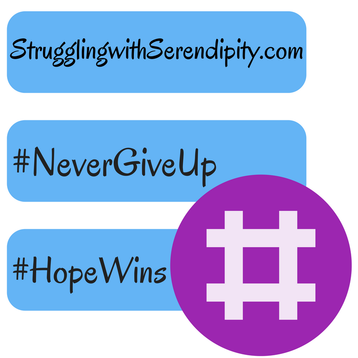 (This blog tells my family's story. To see more, click "blog" at the top of this webpage.) Approaching the 12-month anniversary of her spinal cord injury, Beth participated in her first seminar for Laraine’s physical therapy students in Toledo. “Beth’s insights and down to earth presentations enlighten students and motivate them to challenge the spinal cord injury patients in their care,” Laraine said. The patient panel included a young married quad who showed the students her intricate embroidery while her adorable toddler played nearby. Another quad, an older man, seemed annoyed when his leg straightened suddenly. He broke the spasm by leaning forward and patiently pressing a fisted hand at the back of the knee on the same leg, a process my daughter would practice and duplicate countless times. “I was one of a few panelists who shared our experiences and answered many questions,” Beth said. “I also participated in the ‘hands on’ part with Laraine showing specific techniques. Then the seminar participants tried the exercises with me while we talked. I hope it helped them understand a patient’s perspective a little better, and also to see that a quadriplegic can do more than is usually expected.” Laraine asked Beth to start the physical therapy routine, to transfer out of her wheelchair with help, to lift an inert leg onto the mat table with a now-stronger arm, and sit up slowly on her own. As she sat in the long-sitting position with her hands in her lap, Laraine gently pushed and prodded her trunk. Beth stayed upright most of the time, winning the battle. The students clapped. To finish the demonstration, Beth wobbled through the steps of the ending routine independently. She tied the laces of her shoes and used her teeth to do the final tightening. It would take more persistent trial and error to complete the task without using her teeth. Laraine asked her to share the progress with her ongoing ponytail quest. Beth scooted forward in her chair and then leaned back to anchor herself for better balance. Her right wrist lifted the hair up from the nape of her neck. She put a standard elastic band around her left index finger and left thumb. With effort, she used her head as an anchor for her hand to move the hair through the elastic band. Unfortunately, it wasn’t tight enough. She kept trying to loop the band around a second time to hold the ponytail in place, determined to do it on her own. Another year would pass before Beth achieved her goal of a perfect messy ponytail. Curious how she does it? Here are two of her videos: www.ablethrive.com/basics/putting-hair-up-in-a-ponytail ...And one that includes tying shoes: www.youtube.com/watch?v=6HT-yjaeCJU 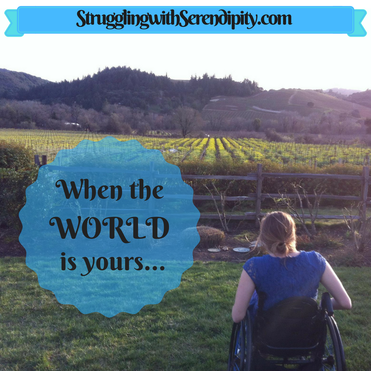 (This blog tells my family's story. To see more, click "blog" at the top of this webpage.) Beth’s physical therapist, Laraine, showed her how to shift her body to trigger a leg spasm that bent her knees, an invaluable skill for changing clothes in bed. Lying on her back with knees bent, Beth hugged her thighs up and over her body. Feet in the air, she put a pant leg over one foot to begin, the opposite of what most do (putting a foot into a pant). After the pants bunched at her knees, she pushed down on her thighs to straighten her legs. Then, rolling from side to side with effort, she pulled up the fabric a little at a time by hooking her left index finger (the one finger she could partly command) in a belt loop. The first year after her injury, Beth let me take over for the final stretch, though she always tried (and failed) to budge the zipper and hook the button. She refused to consider clothing with alterations, with the exception of flip-flops, her preferred footwear. I added a piece of thin elastic around the back heel and sewed it to each of the side straps so they would stay on. Getting in and out of cars sometimes scraped and smudged her unprotected feet, a consequence she judged to be acceptable. When her legs swelled, Beth used her new skill to deliberately trigger a leg spasm to stretch the muscles, move the blood, and reduce the risk of blood clots. She stayed active, and threw away the white compression stockings. Therapy continued three times a week after school. We met a woman with the same level of injury who proudly showed us her straight fingers on the padded armrests of a power chair, the result of a long concerted effort with hand splints and stretching exercises. Beth asked her favorite therapist for advice about the splints for quads that were generally recommended. As always, Laraine presented both sides of the issue. The rigid splints extended from the fingers to the elbow and could interfere with sleep. Others slept fine with the splints and wore them religiously. Laraine explained that for quads, straight fingers could hinder the ability to grasp items well with the tenodesis reflex. That made it an easy decision for Beth. She discarded the splints and chose more function over form. She owned wheelchair gloves but rarely used them, since she liked the ones with individual fingers that took a long time to put on. When meeting new people, she never hesitated to extend her calloused fist for a handshake, not worried about how her hands looked. Beth’s confidence was growing; she had more at 14 than I had at 42, though I worried about doors being closed to her because of her disability. The first year after her injury, I thought it was inevitable that her attitude would crash and burn at some point. I’m glad that I was wrong. More years would pass before I realized that she had the world at her fingertips, even after her injury. From Beth’s point of view, every door was open. 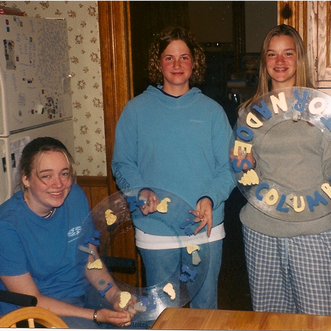 (This blog tells my family's story. To see more, click "blog" at the top of this webpage.) “My friends have been very positive, full of encouragement, and have accepted my disability, and treated me just like everyone else,” Beth said. At the high school, her friend Jackie bumped her manual wheelchair down two wide steps in the music room. One day, a small wheel turned sideways. After the girls tumbled to the floor, they burst out laughing. Beth, 14 years old, described the scene soon after it happened. “My choir teacher pretty much freaked out at first and he got me back into my chair really fast. It was funny!” The concerned choir director offered to change where Beth sat to avoid the steps, but she declined. Like Ben and Maria, she had inherited perfect pitch, probably from their grandmothers who had sung for weddings in times gone by. During my recent trips to volleyball tournaments, long drives, I loved how my girls had belted out their favorite songs with the radio. After the accident, Beth’s lung capacity limited the strength of her voice, but not her love of music and singing. I drove Beth to Green Springs three times a week after school. The physical therapists reminded my tired and pale daughter to take care of herself. She wasn’t getting enough sleep. By the time we arrived home on therapy days and ate a late dinner, the evenings barely allowed for the extra time needed for routine tasks like showering and too much homework. Marathon days for a newly injured teenager with quadriplegia. I struggled to keep up, too: bone-tired, hurting, and deeply sad. Laraine asked us to help with a teaching seminar for therapists, the first of many, on a Saturday. “I call on Beth to talk to newly-injured spinal cord patients,” Laraine said. “Her skills inspire them and her attitude is positive and motivating.” One of the therapists asked me what they could do to support parents. I responded that taking good care of our children was the best gift. I didn’t try to explain my tunnel vision, with no light at the end. At that point, I wanted to have hope, but I couldn’t see past my guilt. The therapists also had questions for Beth. “Most people dread hospitals and hate them. I don’t,” she said. “I have met many great people in hospitals. The St. Francis Rehab Hospital is my second home and my physical therapists are like family. Some may look back on my initial days at St. Vincents with depression and grief, but my experience was positive, except maybe the first day. To me, hospitals are not places of sadness.“ For the main part of the teaching seminar, Beth followed the initial steps of every workout and struggled to get on the mat table. Her favorite therapist assisted and described the muscle mechanics of the exercises. “Beth still faces many new challenges,” Laraine said. “I know she is up to the task.”  (This blog tells my family's story. To see more, click "blog" at the top of this webpage.) Beth's young African Gray parrot screeched and squawked in an impressive range of piercing, demanding sounds. I tried to give Timber attention when he wasn’t yelling at me, but he didn’t like my attempt at a behavior plan. The parrot woke up early every day, an impatient alarm clock. On weekends, John and I took turns babysitting so the girls could sleep in. During my turn, Timber sat on my shoulder while I folded clothes or cleaned or cooked or rewrote my to-do list. I couldn’t sit still. Through Beth’s freshman year of high school, weekends focused on recovery. Maybe a movie with friends or an excursion to the YMCA pool. Our packed weekdays were overwhelming and exhausting between school, physical therapy, occupational therapy, extensive homework, and frequent medical appointments. Every small action of life was a challenge. The approaching holiday season lost its appeal for me. Timber shrieked when I pushed his cage in a corner to make room for our artificial green tree. With everyone busy, I decorated most of the tree, topping it with a red glass cardinal. The sweet ornaments my kids made when they were little did not evoke the usual nostalgia. I fought more tears, thinking about my babies growing up and the end of childhood. I avoided people and neglected friendships. I dreaded the social interactions required at holiday choir concerts and other events; “How are you?” echoed from well-intentioned acquaintances. How should I respond? I would not share my regret in the high school lobby. I refused to be a lightning rod for pity. When I was asked about Beth, deadly health risks of quadriplegia came to mind. Instead, I said something about her amazing attitude and found an excuse to retreat. My counseling sessions slammed me every week with sharp dichotomies. I had no disability and fought with pain every day. I appeared calm and anticipated crisis. I loved my family and my heart ached. My guilt spilled over in waves. How could I contain it? My psychologist didn't know. She reminded me about all the things out of my control—which might have been helpful for someone in a better frame of mind. 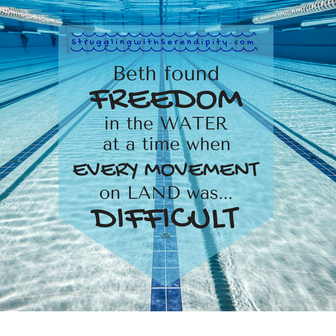 (This blog tells my family's story. To see more, click "blog" at the top of this webpage.) After I quit my job at the high school, our new normal changed for me from an onslaught to simply overwhelming. Beth attended school most days and I met her there over her lunch period. Life continued to be exhausting. Even so, Beth looked forward to physical therapy. I watched her complete the beginning steps of a therapy session in November, six months after her injury. Progress was obvious. She no longer needed complete assistance with hand-over-hand guidance, but she also could not move out of her chair independently. Laraine caught Beth when she tipped too far forward to pull a wheelchair brake, helped her scoot over on a sliding board, and steadied her as she sat up on the mat table. At a time when every movement on land required focused exertion, Beth found unexpected freedom in the water. Not a swimmer before the injury, she needed more trials with more sinking before she could stay afloat on her back for more than a few moments. Waving her arms underwater moved her backwards. When she lost her balance and tipped over, she couldn’t get back in a floating position or get to the edge of the pool by herself—or get her head up to breathe. At the pool wall, she held herself up with both hands, then tried and failed, over and over, to get on her back without help. Weeks later, Beth invited Laraine and Jill to her last therapy session in the rehab pool. In the water with another therapist, my youngest attempted to float on her own, unsuccessfully. Sinking, she worked her arms in a burst of effort, raised her head, reached up to the wall with both hands, and caught her breath. After another try, she positioned herself on her back and waved her arms underwater to stay afloat, to breathe, and to move very slowly across the small pool. Eventually reaching the opposite wall, she grabbed the ledge with effort, using both hands. In an impressive feat of balance, Beth achieved a floating position independently again and dragged along a sinking trunk and legs through another lap. “Once she entered the water, wow,” Jill said. “It was awesome!” Seven years later, after setting 14 Paralympic American Records, Beth told a Harvard reporter, “I discovered I had good water technique and was able to keep myself afloat pretty well. Not at the beginning—it obviously took me awhile to learn how to swim.” |
Cindy KolbeSign up for my Just Keep Swimming Newsletter by typing your email address in the box. Thanks!Categories
All
Archives
November 2022
|
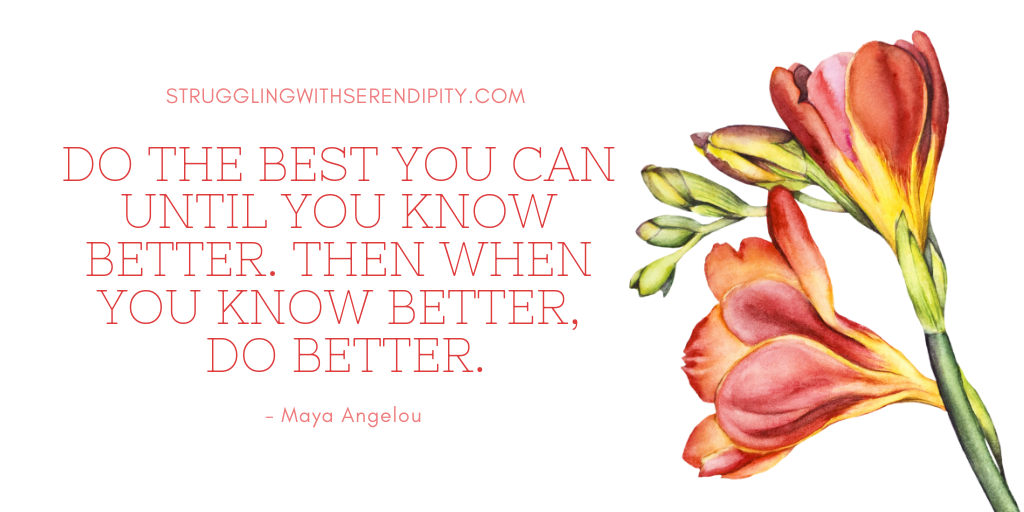
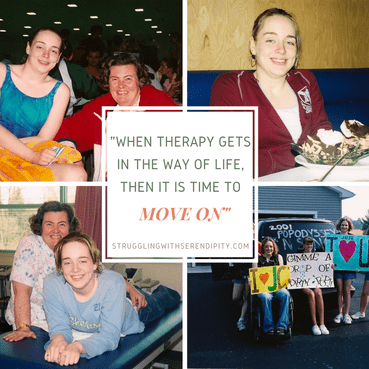

 RSS Feed
RSS Feed





